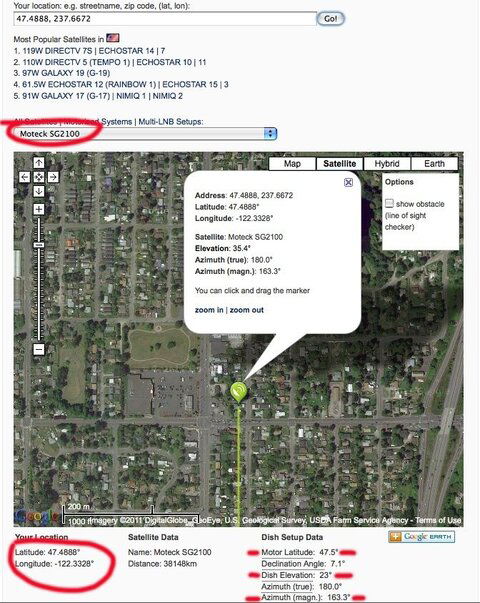There's nothing in the way. The dish looks "offset degrees" up from the perpendicular of the face of the dish. You should be able to tweak the dish around, up/down and find it. (looking at dishpointer, I'd say you're very close in aim, I got Elevation:30.9° Azimuth: 149.7°) If you can't get Q, I'd be suspecting the 360. Have you ever had Q before, or after, loading the FW? Or with this LNBF? FWIW- Is it a single piece of coax, receiver to lnbf? Guess, if it was me, I'd be grabbin' my other, known working, receiver and LNBF, if I couldn't find it in 20 to 30 minutes.
Q is always zero. I heard it takes 30 secs to get the signal? I got the coax running from the LNB and then connecting it to a coax cable on the outside wall. Then I connected the receiver to the wall plate.


